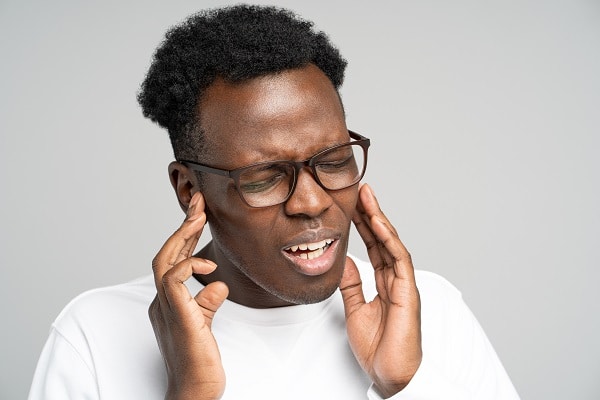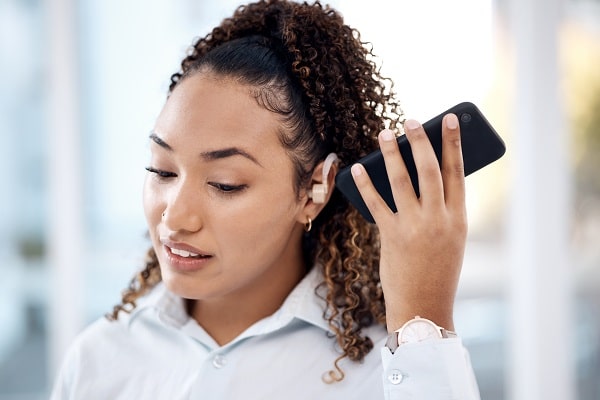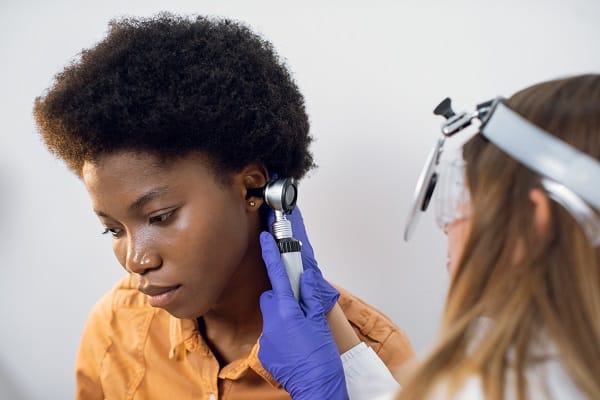Hearing is a vital sense that connects you to the world, allowing you to communicate, enjoy music, and be alerted to your surroundings. However, many people experience varying degrees of hearing loss, which can significantly impact their quality of life. Understanding the different types of hearing loss is essential for early detection, effective treatment, and fostering empathy for those affected. In this article, you’ll dive into the intricacies of how you hear and explore some of the common types of hearing loss.
Contents
- The Fundamentals Of Hearing
- Conductive Hearing Loss
- Sensorineural Hearing Loss
- Mixed Hearing Loss
- Auditory Neuropathy Spectrum Disorder (ANSD)
- Unilateral Vs. Bilateral Hearing Loss
- Sudden Vs. Progressive Hearing Loss
- Fluctuating Vs. Stable Hearing Loss
- Age-Related Hearing Loss (Presbycusis)
- Reflecting On The Spectrum Of Hearing Loss
- Related
The Fundamentals Of Hearing

The human ear is a complex organ intricately designed to capture and process sound. It consists of three main parts: the outer ear, middle ear, and inner ear. The outer ear captures sound waves and funnels them into the ear canal. These waves then hit the eardrum in the middle ear, causing it to vibrate. These vibrations are then transferred to the inner ear, where they are converted into electrical signals and sent to the brain for interpretation.
However, the process doesn’t end there. Once the brain receives these signals, it deciphers them, allowing you to recognize a familiar voice, enjoy a melody, or understand spoken words. This entire process happens in a fraction of a second, highlighting the efficiency and sophistication of your auditory system. Below you’ll find a breakdown of some of the common types of hearing loss that can disrupt this process.
Conductive Hearing Loss

Conductive hearing loss occurs when there’s a problem transmitting sound waves through the outer or middle ear. Common causes include ear infections, blockages from earwax, or abnormalities in the ear’s structure. For instance, a perforated eardrum or a malfunctioning Eustachian tube can hinder sound transmission, leading to this type of hearing loss.
Symptoms often include muffled hearing or a feeling that the ear is plugged. Fortunately, many cases of conductive hearing loss are temporary and can be treated. Treatments range from simple procedures like earwax removal to surgeries for more severe structural issues. Early detection and intervention are crucial to prevent long-term complications and restore optimal hearing.
Sensorineural Hearing Loss

Sensorineural hearing loss is the most common type and arises from issues in the inner ear or with the auditory nerve itself. The tiny hair cells in the inner ear, responsible for translating sound vibrations into electrical signals, can become damaged due to various reasons. Age, prolonged exposure to loud noises, and certain medications can all contribute to this damage.
Unlike conductive hearing loss, sensorineural hearing loss is often permanent. Symptoms include difficulty understanding speech, especially in noisy environments, and a decreased ability to hear high-pitched sounds. While hearing aids and cochlear implants can help manage the condition, prevention, such as protecting ears from loud noises, remains the best approach.
Mixed Hearing Loss

Mixed hearing loss is a combination of both conductive and sensorineural hearing loss, meaning there are issues in both the outer or middle ear and the inner ear. This dual nature can make it particularly challenging to diagnose and treat. For example, a person might have age-related damage to their inner ear hair cells while also having a blockage or infection in the middle ear.
Treatment for mixed hearing loss often requires a multifaceted approach. Addressing the conductive aspect might involve removing earwax or treating an ear infection, while the sensorineural component might be managed with hearing aids. It’s essential for individuals to consult with an audiologist or ENT specialist to get a comprehensive diagnosis and tailored treatment plan.
Auditory Neuropathy Spectrum Disorder (ANSD)

Auditory Neuropathy Spectrum Disorder (ANSD) is a unique type of hearing loss where the inner ear receives sounds correctly, but there’s a disruption in the sound signals being transmitted to the brain. This can result from damage to the hair cells in the inner ear or issues with the auditory nerve. Individuals with ANSD might hear sounds, but they can have difficulty interpreting or making sense of them.
The symptoms of ANSD can vary widely among individuals. Some might experience mild challenges in understanding speech, especially in noisy environments, while others might face significant hearing impairments. Treatment options can range from hearing aids designed to amplify sound to cochlear implants or communication therapies that help individuals interpret sounds more effectively.
Unilateral Vs. Bilateral Hearing Loss

Unilateral hearing loss refers to hearing impairment in just one ear, while bilateral hearing loss affects both ears. Unilateral hearing loss can be particularly challenging because it can make it difficult to determine the direction of sounds, impacting one’s spatial awareness. Common causes include sudden loud noises, infections, or injuries to one ear.
Bilateral hearing loss, on the other hand, affects both ears and can range from mild to profound. It can result from genetic factors, prolonged exposure to loud noises, or age-related degeneration. Regardless of whether the hearing loss is unilateral or bilateral, early detection and intervention are crucial. Treatments can include hearing aids, surgical interventions, or therapeutic strategies to improve communication.
Sudden Vs. Progressive Hearing Loss

Sudden hearing loss, as the name suggests, occurs without warning and can happen over a few hours or up to three days. It’s often due to infections, trauma, or certain medications. Immediate medical attention is crucial, as timely treatment can sometimes restore some or all of the lost hearing.
Progressive hearing loss, in contrast, develops gradually over time. It’s often age-related, but other factors like prolonged noise exposure or underlying medical conditions can contribute. Regular hearing check-ups are essential for those with progressive hearing loss, as early detection can lead to more effective management strategies, including the use of hearing aids or other assistive devices.
Fluctuating Vs. Stable Hearing Loss

Fluctuating hearing loss is characterized by periods of better hearing followed by episodes of reduced hearing. This inconsistency can be caused by various factors, such as recurring ear infections, Meniere’s disease, or changes in the fluid levels in the inner ear. For individuals with fluctuating hearing loss, the unpredictability can be particularly challenging, making it difficult to anticipate and manage their hearing needs.
Stable hearing loss, on the other hand, remains consistent over time. The level of impairment doesn’t change significantly, providing a predictable baseline for the affected individual. While stable hearing loss might be easier to manage in terms of expectations, it’s still essential for individuals to seek regular check-ups and employ strategies or devices that can help them communicate effectively.
Age-Related Hearing Loss (Presbycusis)

Presbycusis, or age-related hearing loss, is a natural part of the aging process. As you age, the hair cells in your inner ear, responsible for transmitting sound signals to the brain, begin to deteriorate. This degeneration can lead to difficulties in hearing high-pitched sounds or understanding speech in noisy environments.
While presbycusis is common, its onset and progression can vary among individuals. Some might begin to notice changes in their hearing as early as their 40s, while others might not experience significant changes until much later in life. Regular hearing assessments are crucial for early detection and management. Hearing aids, assistive listening devices, and communication strategies can all play a role in helping individuals with age-related hearing loss stay connected with their surroundings.
Reflecting On The Spectrum Of Hearing Loss
Hearing loss, in its various forms, affects millions of individuals worldwide, influencing their ability to communicate, connect, and engage with the world around them. By understanding the different types of hearing loss, you can better empathize with those affected and advocate for early detection and intervention. Whether it’s protecting your ears from excessive noise, seeking regular hearing assessments, or exploring the latest in hearing aid technology, proactive measures can make a significant difference.


